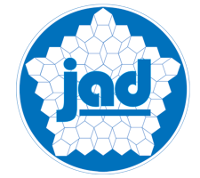Deaf Way II Conference
The conference focused on:
- Cross-cultural and cross-continent exchanges through an international conference on language, culture, history, and art of Deaf people
- Examine technology used by, for and on Deaf people and consider the interconnectedness of Deaf and hearing people in an increasingly technologically sophisticated world
- Celebrate the visual, performing, and literary arts of Deaf people through a Cultural Arts Festival
- Foster greater tolerance and understanding among Deaf and hearing people through scholarly discussions and experiential cultural events for participants, and extensive outreach to the general public
- Heighten opportunities for Deaf people by bringing to light their artistic, leadership and professional capabilities and diverse contributions to societies around the world.
Below are some thoughts and comments from the Deaf Culture Facilitators (DCFs) who attended the conference:
Donna Blair:
Oh, oh, oh incredible!!! I loved Deaf Way II!!! I saw many Deaf people from different countries and their native sign languages. There were 8,000 Deaf people from 81 countries in the world. Whoa! Whoa! I liked how Deaf people wore native dress from their countries. I meet many Deaf people and they were friendly and I learnt their native sign languages. I attended the workshop and I have learnt a lot about topics of the workshops. I was inspired by the topics in the different workshops.
Paula Brooks:
I was so glad that I was going on the trip to Washington D.C. for a weeklong conference. I met my old friends from Buffalo. I was so happy see them as I had not seen them for nine years - oh wow! I went to a workshop about “early childhood education” and one on youth development and I listened to the persons who were speaking at the lecture about their experiences with deaf education. After the workshop I got handouts and came back in the evenings for a party - cool! I went to the party and met some new people from another country. I enjoyed talking to different people.
Osmond Hanchard:
There were Deaf people from different countries together at the meeting. I saw many beautiful exhibits from foreign countries. I was eager to listen to the lectures. One lecturer’s name was Miss Laurene Gallimore. She is an educator and civil rights advocate. She told a story about a bee. Most of the bees work very hard. Every morning the bees bring the nectar from the flowers; they never give up and do steady work. She compared that to us as Deaf people – we should be steady and work hard to become successful. She gave us good knowledge.
I went with two foreign women and an African man to the museum. There was an exhibit showing the history of Deaf people. One picture showed ‘Be quiet’ in a classroom from a long time ago. But today there is no ‘Be quiet’ sign in the class. I looked at all the pictures; things looked difficult. That’s why Deaf people have to suffer and fight for their success. Today we have it easier than people from long ago, as we have ttys, pagers, use sign language and etc.
We returned home and have told Deaf people about “Deaf Culture”. I hope that you are interested. Please be prepared to save money for the World Federation of the Deaf conference in Canada next summer.
Joan Johnson:
I just saw a person lecture about JSL and how a child could not understand their parents. The parents beat their child; and the child suffered a lot because the child could not communicate with their parents. The world needs to support Jamaica and to develop deaf and hearing partnerships. The curriculum for Deaf students should have sign language first, so that child learns JSL easily and clearly. Helping a family with a Deaf child in a group session will allow a parent to learn sign language – JSL – for communicating with their child. If the parent is not successful with JSL, the parent will be bored with their child.
Kathe Lyn:
Deaf Way II in Washington D.C. included people from different countries and cultures. A man named Kevin Long from the USA organises for supporting deaf people through voluntary service. He is willing to volunteer in Jamaica and found people at Deaf Way II. I went to listen to a woman named Amy Wilson. She spoke about Jamaica; she supports the use of sign language (JSL).
Laurene Gallimore gave a speech about white people hating black people in the past. History and white teacher saw this black saw this black girl to go to white people. The school for wanted black and white together in school, white students throw things and spit her in her nervous to go in white students school to not allow blacks go in this school. Many of them compare as same human flesh. In the meeting, many deaf people were cheering this woman, Laurene Gallimore, about the story of her life.
Parents must want deaf children to learn how to sign and communicate. If hearing parents do not teach their children, they will not improve their skills. Deaf children need to be successful in sign language and Deaf people need to show parents and teachers how to use sign language. Then, Deaf children will comfortable in A.S.L.
I saw people from many different countries who are deaf. I wish for Jamaica to improve and I want all hearing teachers to go to Deaf Way II to see themselves what is possible. I enjoyed everything at Deaf Way II.
Zandrea Pitterson:
The Deaf Way II programme was awesome; I met many Deaf persons from different countries. There were a lot of programmes for us to attend and listen what the speakers said. One lady blessed my heart; it really touched me very much. Her name was Mrs Laurene Gallimore. She is a famous black deaf woman in the USA As for me, she is my role model. I would love to share with you what she said. She told us that she was wondering why the hearing and Deaf are different. So, she explained to us and also compared the history of white and black people. Those were enemies. She said, “There were many black children who walked to school so far from home and white children took the train and bus to school.” She stopped her speech and then she showed few movies: Black children attended a poor school with few books and pencils and white children attended a nice school and had many books etc. She said white people feel that black people are basic and can’t reach the same level as white people. She wondered why they are so different and she can’t understand herself. She said, “It is not fair. People see all beautiful and colourful creative examples: animals, trees, flowers, sky etc. She wondered what about people? She told us, “That is all about skin colour - complexions.” Then she showed us the movie again: the black girl’s parents disagreed with the idea of their daughter attending a school for only black children, so her parent decided to fight for it [integration]. They discussed it with a white principal, etc. Next morning the little black girls were walking in the hall with many white children and people at the white children’s school cursed and quarrelled. The little girls seemed so scared but the white guard held her hand and walked her to school. Later the black people hear about it then they start send their children to white children school. Mrs Gallimore said, “In the same way, Deaf people must fight for it. Now the Deaf find their sign language.” She used this story to compare with Deaf people. The King was very wise, more than all the other kings in the world. A queen heard about it and decided to plant a garden. She ordered many false flowers and one true flower to test the king to see if he was so very wise. The King saw many flowers all the same, shape and exactly same colour. He said, “Oh,” and he used his common sense. He opened the window, and the little bee travelled through the window and smelled all around the flowers until it found the true flower and then flew away. The King picked the flower and he said that flower was the one real flower.
Dewdney Scott:
In the Exhibit Hall, I visited different displays about technicians and technology for Deaf in the world at the Washington Convention Centre in Washington D.C. USA. I learnt a lot about international Deaf technicians. I learnt a little international sign language. I assisted Kevin to advertise for Deaf persons to help in Jamaica and Kenya. I want to learn international sign language [editor’s note: Gestuno]. I want to be an interpreter. I enjoyed the trip there.
Jasmine Shim:
We enjoyed Deaf Way II. People from many different countries came and learned from socialising with each other.
Kevin Long had a booth to convince people from his country to support Deaf people in different countries to be successful. In the future, they will build schools and houses for the Deaf. And also Kevin looks for who is willing to teach Deaf children to help with their development, because the Deaf children learn nothing. So how does one help with their development?
Please feel free to contact any of the above persons for further information about the conference or any of the other attendees from Jamaica who were:
Donna Harris
Dainya Hobbins
Simone Jackson
Gilda Lewis
Dawn Malahoo
Marsha Myers
Vendeta Souza-McKenzie
John Mark Raymond
Shirley Reid
Winsome Rhoden
Christopher Seville
Joan Thompson
Dawn Williams





